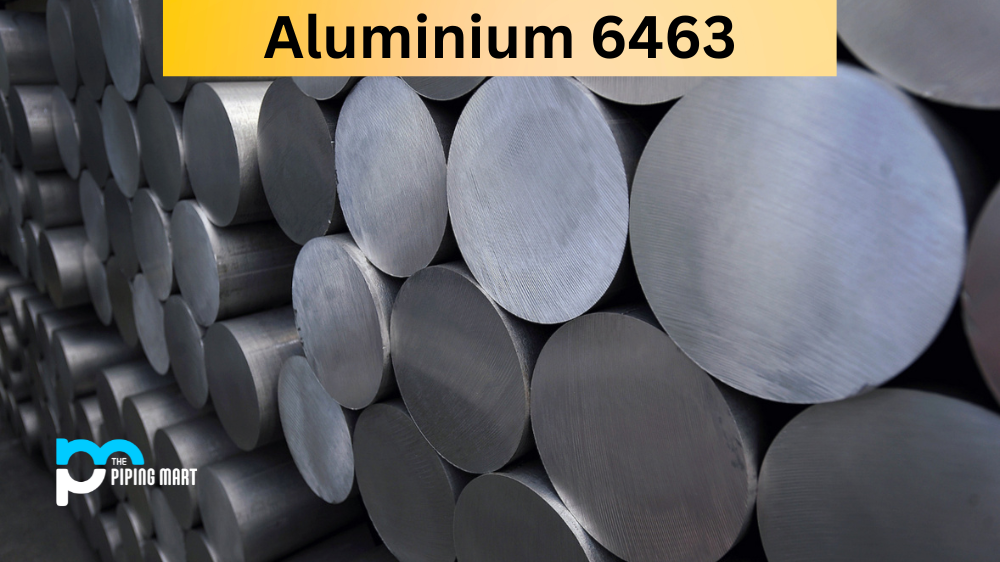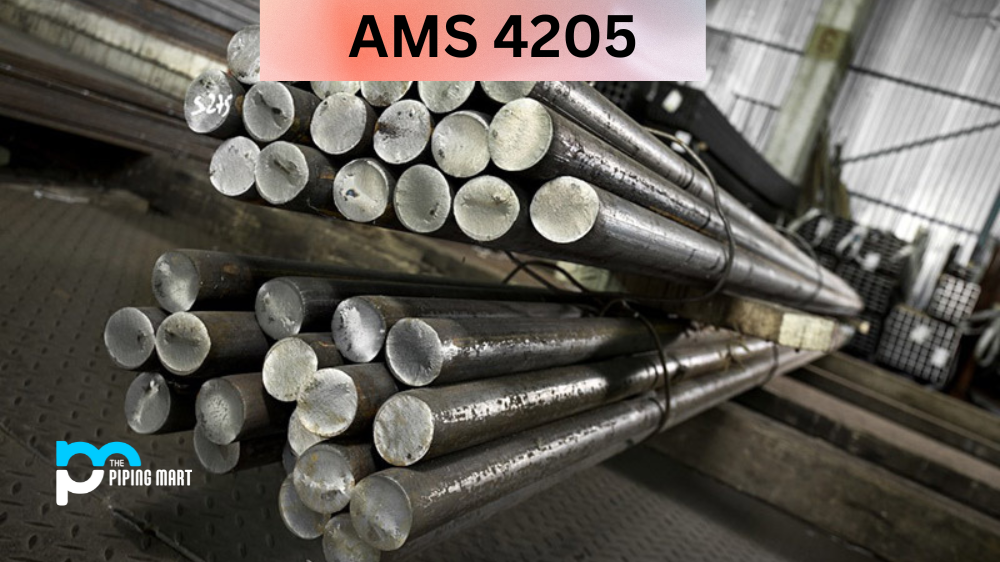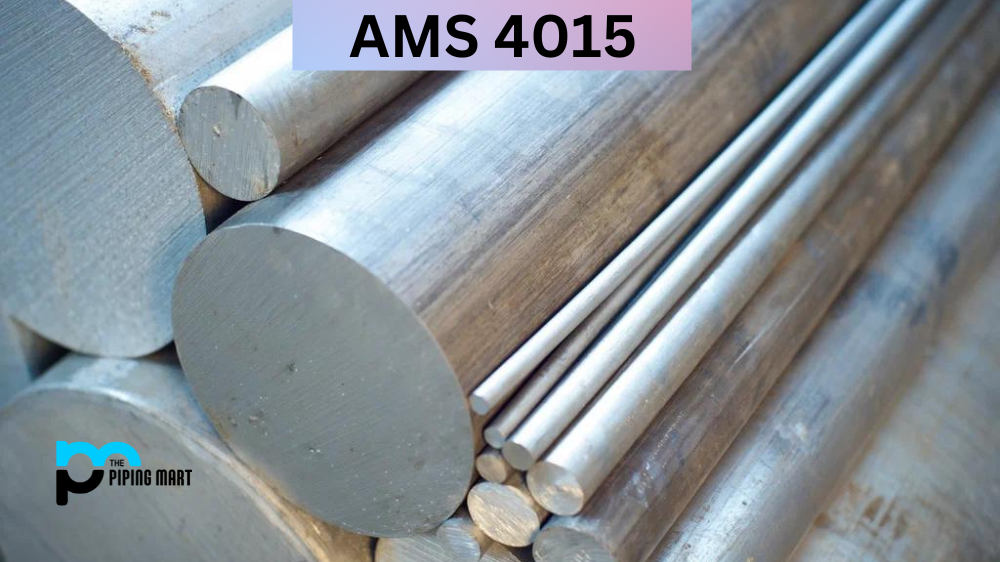Aluminum 6463 Alloy, also known as UNS A96463, is a popular aluminum alloy in the industry due to its unique composition and properties. The alloy is primarily composed of aluminum, silicon, and magnesium, which makes it strong, corrosion-resistant, and easy to work with. This alloy is commonly used in architectural and transportation applications thanks to its excellent formability and weldability. Notably, Aluminum 6463 Alloy offers high tensile strength, perfecting it for complex structural shapes. It is also lightweight, making it easy to transport and install. Whether you’re working on a building facade, automotive components, or railings, the properties of Aluminum 6463 Alloy make it a top choice for various applications. Let’s take a closer look at some of the uses, corrosion resistance, heat resistance, heat treatment, machining, and welding applications of 6463 Alloy.
What Forms of 6463 Alloy is Available at Piping Mart?
- Aluminum 6463 Alloy Bar
- Aluminum 6463 Alloy Pipe
- Aluminum 6463 Alloy Tubing
- Aluminum 6463 Alloy Valves
- Aluminum 6463 Alloy Washers
- Aluminum 6463 Alloy Flanges
- Aluminum 6463 Alloy Fasteners
- Aluminum 6463 Alloy Sheet Plates
- Aluminum 6463 Alloy Pipe Fittings
- Aluminum 6463 Alloy Forged Fittings
6463 Alloy Composition
| Element | Content (%) |
|---|---|
| Aluminum. Al | 98.9 |
| Magnesium, Mg | 0.70 |
| Silicon, Si | 0.40 |
6463 Alloy Physical Properties
| Properties | Metric | Imperial |
|---|---|---|
| Density | 2.6-2.8 g/cm3 | 0.0939-0.101 lb/in3 |
Mechanical Properties
| Properties | Metric | Imperial |
|---|---|---|
| Tensile strength | 150 MPa | 21756 psi |
| Yield strength | 90 MPa | 10354 psi |
| Shear strength | 97 MPa | 14069 psi |
| Fatigue strength | 69 MPa | 10008 psi |
| Elastic modulus | 70-80 GPa | 10153-11603 ksi |
| Poisson’s ratio | 0.33 | 0.33 |
| Elongation | 20% | 20% |
| Hardness | 42 | 42 |
6463 Alloy Thermal Properties
| Properties | Conditions | ||
|---|---|---|---|
| T (ºC) | Treatment | ||
| Thermal conductivity | 192 W/mK | 25 | T1 |
6463 Alloy Equivalent
- ASTM B221
6463 Alloy Uses
Aluminium 6463 is most commonly used in the production of parts for vehicles and aircraft due to its excellent strength and durability. It can also be used in the production of kitchen appliances, marine components, food processing equipment, medical devices and more.
6463 Alloy Uses in Industries
- Aerospace Industry
- Automotive Industry
- Construction Industry
- Marine Industry
- Electrical Industry
6463 Alloy Corrosion Resistance
Aluminium 6463 has excellent corrosion resistance due to its high content of chromium, which forms a protective layer on the surface. This makes it ideal for use in humid or salty environments such as sea air or high-humidity areas, as it will not corrode easily.
6463 Alloy Heat Resistance
Aluminum 6463 has excellent heat resistance properties due to its high content of chromium, which gives it greater stability at higher temperatures compared to other types of aluminum alloys. This makes it an ideal choice for use in applications where temperatures may exceed 600°F (316°C).
6463 Alloy Heat Treatment
Aluminium 6463 can be heat treated in order to increase its strength and hardness while maintaining its corrosion-resistant properties. The most common way to do this is by quenching and tempering, which involves heating the metal up to approximately 1000°F (538°C) before quickly cooling it down in cold water or oil. This process increases the hardness and strength but also lowers the ductility.
6463 Alloy Machining
Due to its relatively low melting point compared to other metals such as steel, aluminium 6463 can easily be machined into complex shapes using conventional machining techniques such as turning, milling and drilling without any difficulty. Its low friction coefficient also makes it easier to machine than other materials such as stainless steel or titanium alloys.
6463 Alloy Welding
Aluminium 6463 can be welded using TIG welding techniques, typically used when working with thin sheet metal parts or components that require precise control over temperature during welding processes. When welding aluminum alloys, special care must be taken since they are sensitive to cracking if too much heat is applied during the welding process. Therefore it is important that you use low amperage settings when welding aluminium alloys so that they do not crack during the process.
Conclusion:
In conclusion, aluminium 6463 is an excellent choice for numerous applications due to its corrosion-resistant properties, heat resistance capabilities, easy machinability, and weldability when using TIG welding techniques with appropriate parameters for temperature control during welding processes. Its low melting point means that it can easily be shaped into complex shapes without any difficulty making it ideal for use in many industries, from automotive manufacturing to aerospace engineering and beyond! Whether you need a part produced from this material or just want more information about how this material works in various applications, contact us today! We’d be happy to help you find what you need!

A passionate metal industry expert and blogger. With over 5 years of experience in the field, Palak brings a wealth of knowledge and insight to her writing. Whether discussing the latest trends in the metal industry or sharing tips, she is dedicated to helping others succeed in the metal industry.




